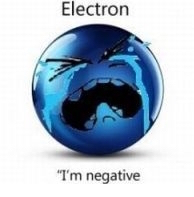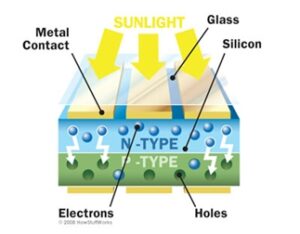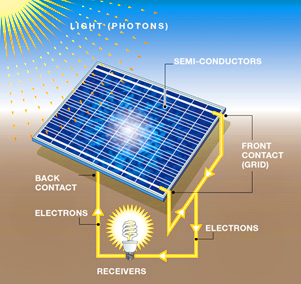Electrons – subatomic particles that have a negative charge

Photovoltaics – the method of converting light (photons) to electricity
Here is the basic explanation of what happens.
The top of solar cells are made of material that absorb light – often silicon. Photons are absorbed and the energy from their heat excites the electrons. These excited electrons are attracted to the bottom layer of the solar cell through wires or holes. This movement creates an electric current.

BAM! ELECTRICITY!
Here is an explanation that is a little more technical:
“When light energy, or photons, strikes a photovoltaic cell, electrons are “knocked” loose from a layer in the cell designed to give up electrons easily. The charge difference that is built into the cell pulls the loose electrons to another cell layer before they can recombine in their originating layer. This migration of electrons creates a charge between layers in the photovoltaic cell. Electrically connecting the positively and negatively charged layers of a photovoltaic cell through a load (e.g. a light bulb) will produce electricity as the electrons flow through the circuit, thus, lighting the light bulb as they are attracted back to the positive layer of the cell.” US Department of Energy

This electricity moves in a straight line, what is called direct current (DC). It moves through cables to an inverter, which converts it to alternating current (AC) and then powers our homes, businesses, and community centers.
If you would like a more in depth description, here are two options for you:
How do Solar Panels Work? – Penn State
How do Photovoltaics Work? – NASA
If you would like a solar quote for your home, click here.
If you’d like a solar quote for your business, click here.